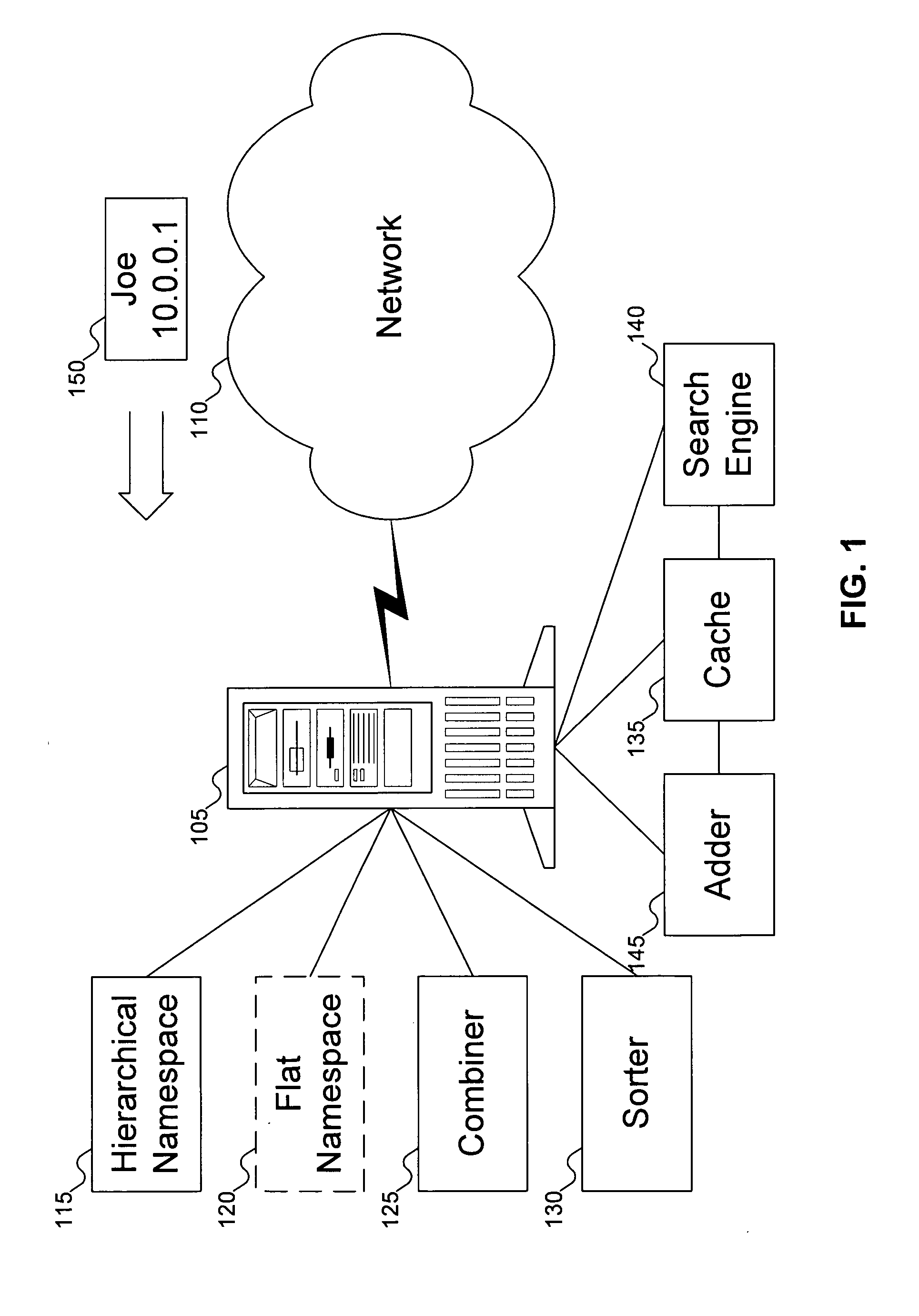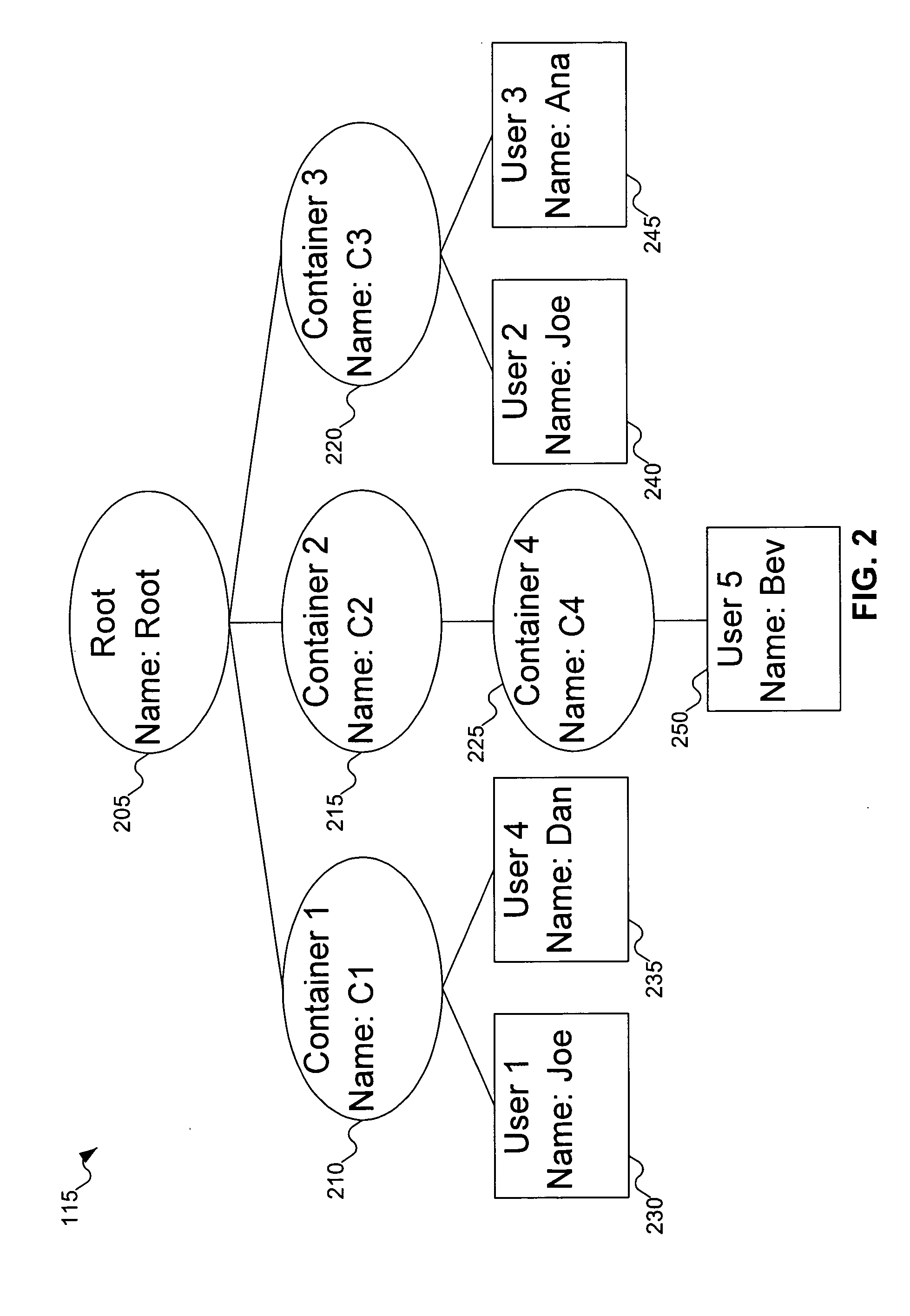Method for mapping a flat namespace onto a hierarchical namespace using locality of reference cues
a technology of local reference cues and namespaces, applied in the field of namespace management, can solve the problems of repeated errors, user imperfection, and increased complexity of passwords
- Summary
- Abstract
- Description
- Claims
- Application Information
AI Technical Summary
Benefits of technology
Problems solved by technology
Method used
Image
Examples
Embodiment Construction
[0026]FIG. 1 shows a server equipped to map flat names to a hierarchical namespace, according to an embodiment of the invention. FIG. 1 shows server 105 connected to network 110. Server 105 includes hierarchical namespace 115, flat namespace 120, combiner 125, and sorter 130. Hierarchical namespace 115 (sometimes called a container hierarchy, because it includes containers structured in a hierarchical manner) includes containers and identifiers organized in a hierarchy. Hierarchical namespace 115 is shown in greater detail in FIG. 2. Flat namespace 120 contains identifiers similar to those in hierarchical namespace 115, but without the organization imposed by hierarchical namespace 115. Flat namespace 120 is shown with a dashed line because it might not exist as a separate object. That is, flat namespace 120 might exist only as a part of some other object within the system. For example, flat namespace 120 can be derived from the leaf nodes of hierarchical namespace 115 (see below wi...
PUM
 Login to View More
Login to View More Abstract
Description
Claims
Application Information
 Login to View More
Login to View More - R&D
- Intellectual Property
- Life Sciences
- Materials
- Tech Scout
- Unparalleled Data Quality
- Higher Quality Content
- 60% Fewer Hallucinations
Browse by: Latest US Patents, China's latest patents, Technical Efficacy Thesaurus, Application Domain, Technology Topic, Popular Technical Reports.
© 2025 PatSnap. All rights reserved.Legal|Privacy policy|Modern Slavery Act Transparency Statement|Sitemap|About US| Contact US: help@patsnap.com



